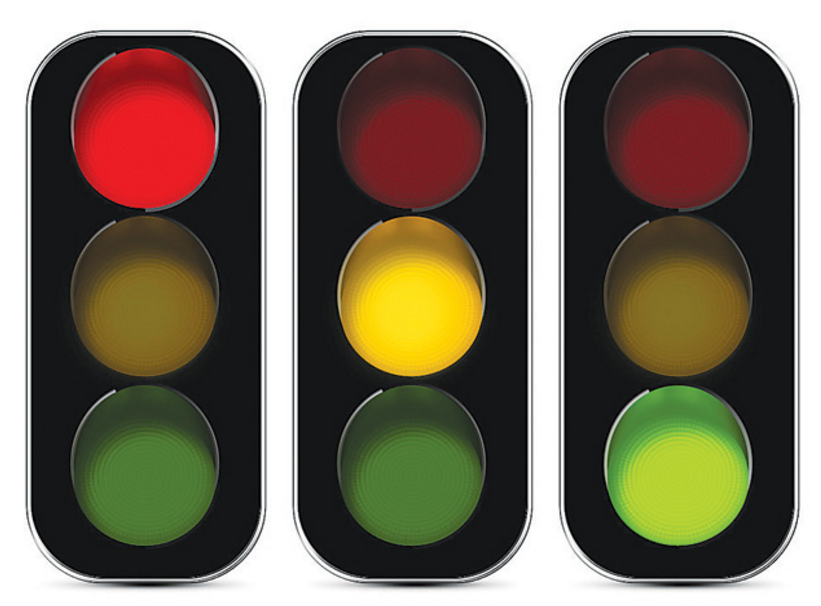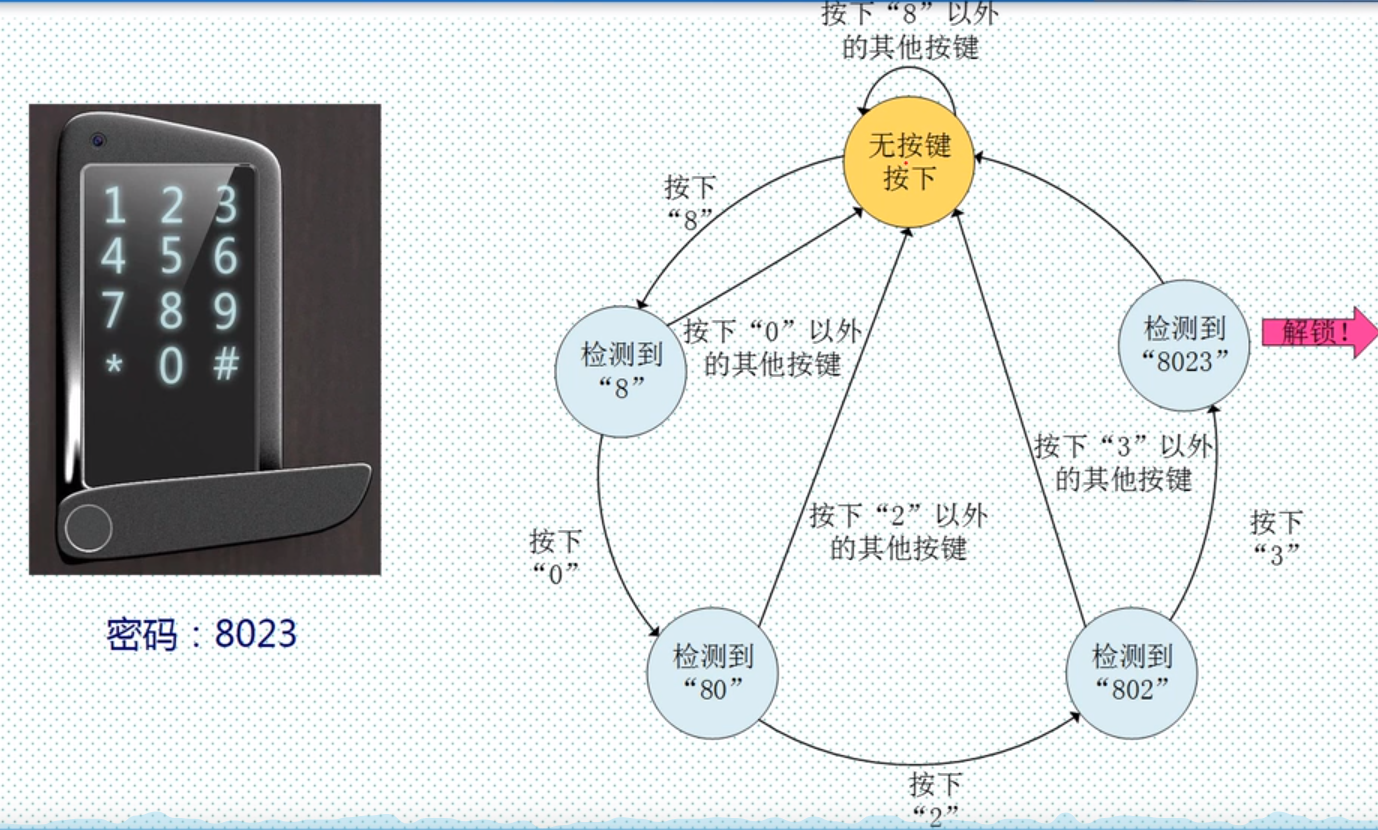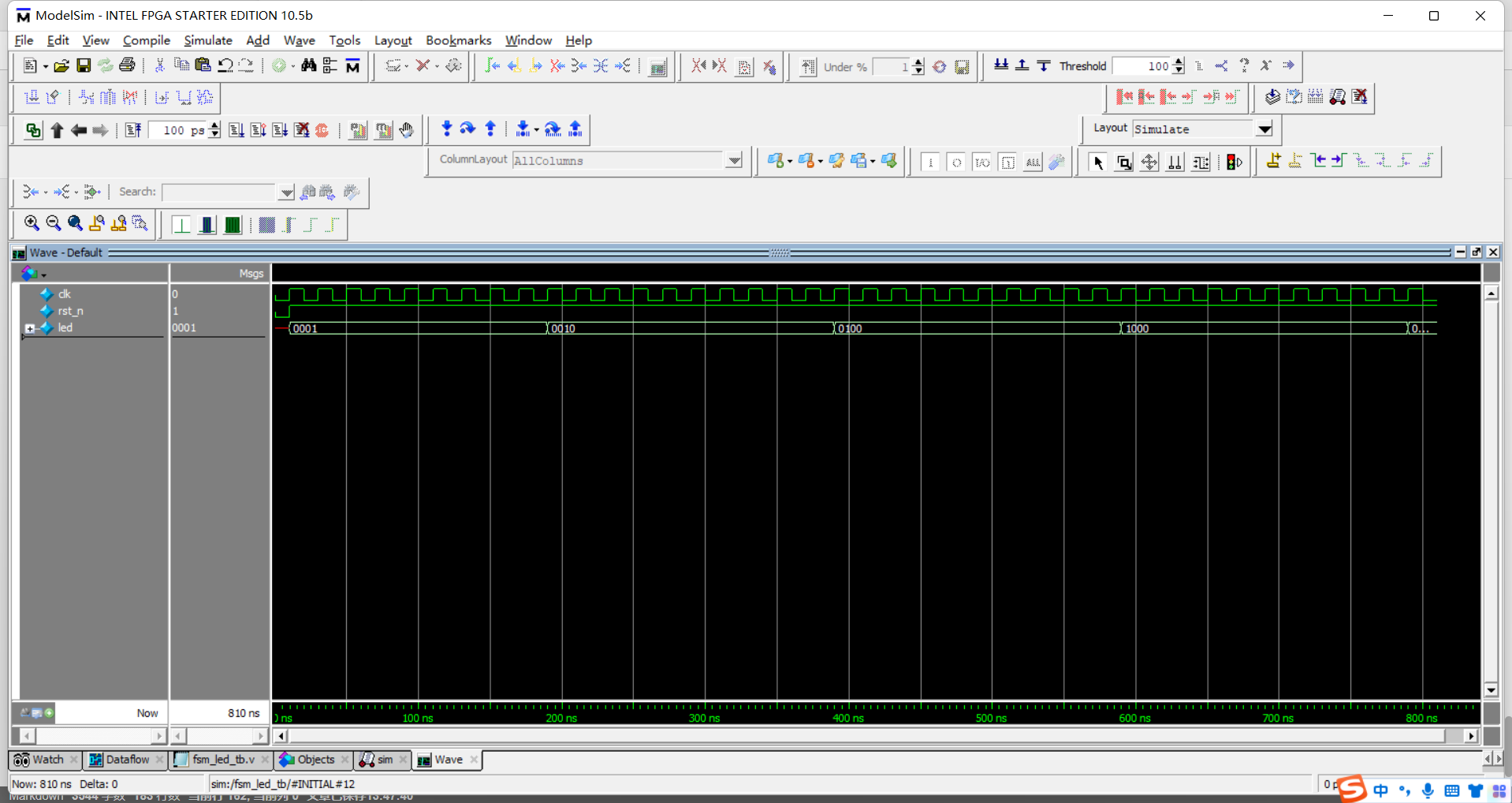preface
in the previous course, we learned led light control, key anti chattering, key control buzzer and so on. This paper will introduce the state machine. Based on the previous courses, the state machine will be used to design the water lamp and simulate the electronic door lock.
1, Introduction to finite state machine
finite state machine (FSM), also known as finite state automata, or state machine for short, refers to a sequential circuit that converts between finite states according to a certain law.
2, Application of finite state machine
2.1 traffic lights
the traffic light of the motorway is actually a running light realized by the finite state machine, but the flashing interval of the traffic light is different. Generally, the yellow light is 3s, the red light is 60s and the green light is 20s. We set the flashing interval in the running water lamp to be equal. In the fourth section of this paper, we will use finite state machine to implement water lamp.

2.2 electronic door lock
the process of password unlocking is also a finite state machine. The electronic lock can be opened only by entering the password in the correct order.

3, Finite state machine model
finite state machines mainly include Miley state machine and Moore state machine. The state machine whose output is directly related to the input variable is called Millie state machine, and the state machine whose output is not directly related to the input variable is called Moore state machine.
3.1 Millie state machine

3.2 Moore state machine

4, FSM realizes flow lamp
4.1 fsm_led source code
module fsm_led( input clk ,//Clock signal, 50MHz input rst_n,//Reset signal, falling edge valid output reg [3:0] led//4 led lights ); parameter TIME = 50_000_000;//Interval 1s //state space parameter S_LED0 = 2'd0; parameter S_LED1 = 2'd1; parameter S_LED2 = 2'd2; parameter S_LED3 = 2'd3; //Status of four led lights parameter LED0 = 4'b0001; parameter LED1 = 4'b0010; parameter LED2 = 4'b0100; parameter LED3 = 4'b1000; reg [25:0] cnt;//Clock counter reg [1:0] current_stat;//Current status register //Timing module always@(posedge clk or negedge rst_n)begin if(!rst_n)begin//reset cnt <= 26'd0;//Counter clear 0 end else if(cnt == TIME - 1)begin//Full 1s cnt <= 26'd0;//Counter clear 0 end else begin cnt <= cnt + 26'd1;//Other times plus 1 end end //State switching always@(posedge clk or negedge rst_n)begin if(!rst_n)begin current_stat <= 2'd0;//The current state is initialized to 0 end else begin case(current_stat) S_LED0: begin//When the status is 0 if(cnt == TIME - 1)begin//Full 1s led <= LED1;//led light switch 0010 status current_stat <= S_LED1;//Status register switch 2'd1 end else begin led <= LED0;//Otherwise, keep 0001 current_stat <= S_LED0;//Keep the original state end end S_LED1: begin if(cnt == TIME - 1)begin//Full 1s led <= LED2;//led switch 0100 status current_stat <= S_LED2;//Status register switch 2'd2 end else begin led <= LED1;//Otherwise, maintain 0100 status current_stat <= S_LED1;//Status register switch 2'd1 end end S_LED2: begin if(cnt == TIME - 1)begin//Full 1s led <= LED3;//led switch 1000 status current_stat <= S_LED3;//Status register switch 2'd3 end else begin led <= LED2;//led switch 0100 status current_stat <= S_LED2;//Status register switch 2'd2 end end S_LED3: begin if(cnt == TIME - 1)begin//Full 1s led <= LED0;//led light switch 0001 status current_stat <= S_LED0;//Status register switch 2'd0 end else begin led <= LED3;//led switch 1000 status current_stat <= S_LED3;//Status register switch 2'd3 end end default:; endcase end end endmodule
4.2 fsm_led_tb test file code
`timescale 1ns/1ns//Unit / accuracy module fsm_led_tb(); parameter CYCLE = 5'd20;//The cycle is 20ns parameter TIME = 4'd10;//The interval of running water lamp is 10*20=200ns reg clk ;//Clock reg rst_n ;//Reset signal, falling edge valid wire [3:0] led ;//Four led lights always #(CYCLE/2) clk = ~clk;// Flip every 10ns initial begin//Initialization signal clk = 1'b0 ;//The clock signal is initialized to 0 rst_n = 1'b0 ;//The reset signal is initialized to 0 #(CYCLE/2) ;// Wait 10ns rst_n = 1'b1 ;//Reset signal pull high level #(CYCLE * TIME * 4);// Wait for 20*10*4ns to observe the signals of the four led lights of the water lamp $stop ;//stop it end //Instantiation test module fsm_led #(.TIME (TIME)) u_fsm_led(/ / take another name .clk (clk) ,//Clock signal, 50MHz .rst_n (rst_n),//Reset signal, falling edge valid .led (led)//4 led lights ); endmodule
4.3 function simulation

6, Pin assignment
| element | Pin |
|---|---|
| LED0 | G15 |
| LED1 | F16 |
| LED2 | F15 |
| LED3 | D16 |
| KEY0 | E15 |
| KEY1 | E16 |
| KEY2 | M16 |
| KEY3 | M15 |
| Colock (clock) | E1 |
summary
the above is what we want to talk about today. This paper only briefly introduces the finite state machine, the main models of the finite state machine, and the implementation of the finite state machine. Finite state machine is widely used, including the electronic door lock in this paper. Interested students can use the keys and LEDs on the cyclone IV development board to simulate the unlocking process of the electronic door. Because the final function is similar to the running water lamp, the video demonstration effect will not be uploaded in this paper. Thank you for watching!